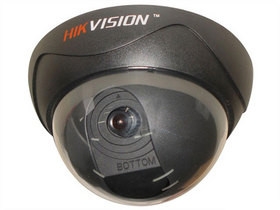Wuxi Monitoring The design and implementation of the monitoring station is the focus of the development of the entire wireless remote monitoring system. The ability and accuracy of the monitoring station to process information data will affect the performance of the entire system. In the whole development process, the design of monitoring station is a part of heavy workload and long time. The monitoring station is located at the work site and only completes data acquisition, processing and control. The task is relatively simple and fixed, and it does not need to use a large desktop computer to complete it; Considering energy saving and easy deployment, most monitoring stations are embedded systems. According to the functions to be realized by the entire wireless remote monitoring system, and the requirements for data processing and sensor control capabilities, the complexity of the monitoring station design and the specific technology used are different.
Design based on MCU
Single chip microcomputer is the first choice for most embedded system design. Due to the rich peripherals integrated on the chip and the good control ability, the single chip computer is naturally tailored for embedded systems and occupies a large share in the embedded market.
The design scheme based on single-chip microcomputer is generally applicable to remote monitoring systems with low requirements for data processing and small amount of calculation. According to the needs, the single-chip microcomputer can choose a low-end 4-bit or 8-bit computer, such as 8051, or a special chip with strong functions, such as MSP430FE42X series. Single chip microcomputer is mainly used for system control of monitoring station. Off chip memory is generally RAM, EEPROM, Flash and other memory; I/O equipment is generally keyboard, LCD and other human-computer interface for design and commissioning; Sensors are generally microphones, cameras, loudspeakers and servo motors. The implementation of wireless communication interface is relatively complex. The codec is optional and generally unnecessary for low rate data.
According to the processing tasks and information types of the system, the codec can choose different cores, such as CMX639 (for audio) or LD9320, or it can be realized by programming logic devices. The monitoring station software can be directly realized by C or assembly language, and application software can also be developed on the real-time operating system. For low-grade 4-bit or 8-bit MCU, the control ability is low and the system is simple. Generally, the method of directly writing control program is adopted.

Design based on DSP
As we all know, DSP has strong digital processing capability and mature technology. There are many general-purpose and special chips that can handle various operations. The monitoring station designed and developed with DSP as the core can complete high-speed data processing and ensure the real-time requirements of the system.
This kind of design scheme is generally applicable to the monitoring system with large amount of data processing computation, high real-time requirements and relatively low requirements for control capability. Different from the monitoring system based on MCU, DSP controller In addition, it can also be used for data calculation and encoding/decoding. Whether the more complex encoding/decoding and compression/decompression operations (such as the processing of image and video data) are still completed by DSP must be comprehensively considered. If the DSP is too heavy in system control and transmission protocol implementation, this part of calculation needs to be completed by a special processing chip; If the system control and transmission protocol is relatively simple or does not reach the upper protocol stack at all, this part of complex operation can be completed by DSP.
Design Based on MCU DSP
Obviously, this design method absorbs the advantages of single chip microcomputer and DSP respectively: the characteristics of single chip microcomputer determine that it is good at control, and the internal structure of DSP ensures strong data processing ability. The combination of the two can realize some quite complex system functions, but because the system uses two processors, the information interaction between them is a key consideration when designing such monitoring stations. Only when MCU and DSP work together well can their respective advantages be brought into full play; Otherwise, due to the coordination between the two, a lot of resources are consumed, and the overall performance may not be higher than that of the system with a single processor. The common way to realize communication coordination between MCU and DSP is to use dual port RAM.
In order to expand the application scope of the chip, some DSP or MCU manufacturers expand on the original basis, and incorporate the characteristics of each other, so that the same chip has good performance in data processing and control. For example, the dsPIC launched by Microchip makes it easy for customers to transfer the functions of SCM to DSP. The products launched include the dsPIC30FXXX series. Because the DSP and MCU function modules are implemented in the same chip, the reliability of the system is improved, the design difficulty of the monitoring station is reduced, and the space of the printed board is saved. Such chips are favored by the majority of users.
MPU based design
Another alternative to designing embedded products is to use microprocessor based design. Compared with industrial control computers, embedded microprocessors have the advantages of small size, light weight, low cost and high reliability; At the same time, processors that meet various performance requirements are relatively easy to obtain due to mature technology, multiple product types and large selection space in this field.
With the emergence of high-performance MPUs using RISC architecture (such as processor chips using ARM architecture), MPU has a long-standing position in the embedded field; However, because the circuit board must include ROM, RAM, Flash, bus interface and various peripherals when designing the monitoring station, the reliability of the system will decline, the technical confidentiality will be poor, and the implementation will be difficult.
![]()






